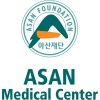
Effectiveness of Character Strengths-based Intervention Among Breast Cancer Patients
Breast CancerThe research design is a randomized control trial to evaluate the effectiveness of character strengths-based intervention in enhancing self-esteem, quality of life and alleviating depression in breast cancer patients. The type of intervention is psychological intervention. Participants in the intervention group will receive character strengths-based intervention. Participants in the control group will receive placebo control care.

Using BETTER Model Sexual Problems in Breast Cancer
SexualityBreast CancerBreast cancer and its treatments such as mastectomy, chemotherapy, radiotherapy, hormonal therapy cause many side effects such as scar, problems with body perception and sexual problems. Sexual concerns lead to significant emotional distress, including sadness/depression, issues related to personal appearance, stigma, and negative impacts on personal relationships, intimacy and sexuality all of which reduce the quality of life. This experimental type of research is conducted within the framework of the BETTER model to evaluate the impact of counselling programme on sexuality issues that patients with breast cancer experience.

Simvastatin Effect in Combination With Neoadjuvant Chemotherapy to Clinical Response and Tumor-Free...
Breast CancerChemotherapy EffectIntroduction: Neoadjuvant chemotherapy (NACT) has been the standard therapy for treating patients with locally advanced breast cancer (LABC). Doxorubicin-based regimen showed a clinical response for 70-80%. However, the cardiotoxicity from it was not tolerable. Simvastatin acts synergistically with doxorubicin against MCF-7 cells, through downregulation of the cell cycle or induction of apoptosis. Also, it alleviates doxorubicin cardiotoxicity by attenuating ER stress and activating the Akt pathway. Hmgcris a new pathway mediating doxorubicin-induced cell death, and cholesterol control drugs combined with doxorubicin could enhance efficacy and reduce side effects. This study is conducted to see the combination simvastatin and CAF would increase the NACT response and surgical margin of LABC patients. Methods: This study was a double-blind, randomized placebo-controlled trial, conducted in dr. Cipto Mangunkusumo General Hospital and Koja General Hospital. A total of 70 LABC patients were assessed for eligibility. Patients received either a combination of CAF-Simvastatin (40 mg/day) or CAF-Placebo. The biopsy was taken pre-NACT to make the histopathological diagnosis and examine the expression of HMG-CoA Reductase (Hmgcr) and P-glycoprotein (P-gp). Patients were evaluated for the clinical response after 3 cycles. If the response was positive, patients will proceed to surgery. Then, the post-operative specimen will be reviewed for the pathological response. However, if it was a negative response, patients will be given 2nd line NACT.

Efficacy and Tolerance of an Ovarian Stimulation Protocol Combining Follicle Stimulating Hormone...
Invasive Ductal Breast CarcinomaThe present investigation aims to evaluate the efficacy of an innovative protocol of controlled ovarian stimulation for breast cancer patients, who are candidates for fertility preservation. Currently, vitrification of oocytes and/or embryos after controlled ovarian stimulation is the most established method for female fertility preservation. However, this stimulation induces an increase in serum estrogen levels, which is theoretically problematic in case of hormone-sensitive tumors such as breast cancer. The majority of oncology teams accept, in very specific situations (particularly when the tumor has been surgically removed), this ovarian stimulation, because the expected benefits of fertility preservation far outweigh the risks. However, everyone agrees that it would be more comfortable to be able to offer vitrification of oocytes and/or embryos using ovarian stimulation without increasing estrogen levels. In this research, investigators will evaluate the efficacy of degarelix (Firmagon®), currently indicated for the treatment of prostate cancer, as an innovative ovarian stimulation procedure. Administered at the beginning of ovarian stimulation, they believe it should maintain serum estradiol levels at physiological values at the end of stimulation.

Improving Exercise Capacity With Tailored Physical Activity in Lymphoma & Breast Cancer Patients...
Hodgkin LymphomaNon-hodgkin Lymphoma2 moreTo provide critical participant enrollment data necessary to complete a larger definitive clinical trial in the future.

Distress Reduction by Activity Tracking and Activity Enhancement by Mobile Support Group in Oncology...
Breast CancerMobile CommunityThis study aims to investigate the effect of the formation of social networks using smartphones can help increase physical activity and reduce stress in survivors after breast cancer treatment surgery.

Evaluation of Ocoxin®-Viusid® in Breast Cancer
Breast CancerBreast Carcinoma2 moreThe purpose is to determine the efficacy of the nutritional supplement Ocoxin-Viusid oral solution (OV) in the reduction of acute toxicity of Chemotherapy (CT) treatment with patients with breast carcinoma. A randomized, double-blind phase II clinical trial was designed, with a sample of 120 patients distributed in 2 arms: 60 patients will receive the CT treatment plus the OV, 60 will receive CT plus OV placebo. The OV / placebo will be administered before, during and 3 weeks after the conclusion of the CT. A better tolerance to the treatment is expected with the addition of the nutritional supplement.

Computerized Cognitive Training in Breast Cancer Survivors
Breast CancerCognitive Change2 moreFor millions of cancer survivors, cognitive impairment is a prevalent, severe, and persistent problem that is associated with other symptoms (depressive symptoms, anxiety and fatigue), poorer work ability, and poorer quality of life. Available evidence, including work by the investigators own group, suggests that cognitive training may be a viable treatment option. However, to date, these studies are limited as none have been conducted in the home and therefore fail to address the transferability of these empirically based cognitive training programs to general practice. The purpose of this translational research is to conduct a home based single-blind, randomized controlled trial to test the feasibility, satisfaction, and preliminary efficacy of cognitive training compared to attention control in breast cancer survivors (BCS) as well as to explore potential biomarkers of intervention effects. This research innovatively builds on investigator's previous research by: 1) translating findings from the laboratory to the home setting and importantly seeks to identify facilitators and barriers of intervention use; 2) addresses limitations of previous trials (uses an attention control rather than a no-contact or wait-list control), (3) examines cognitive training effects on real-life outcomes such as associated symptoms, perceived work ability and quality of life; and (4) will be the first study in cancer survivors to explore levels of BDNF as a potentially sensitive outcome measure of intervention effects over time compared to attention control. Findings from this study will provide necessary information about the feasibility, satisfaction and preliminary efficacy of the home-based cognitive training on memory performance and processing speed as well as its effects on associated outcomes in BCS. Positive results will lead to a larger, full-scale study to determine efficacy and build evidence-based treatment for clinicians to use in treating BCS with cognitive impairment.

Connecting Breast Cancer Survivors for Exercise
Breast CancerBreast NeoplasmsPhase 1: The purpose of this study is to examine interpersonal and individual effects of partnering BCS with a peer and a qualified exercise professional (QEP) on self-reported exercise volume (MVPA; primary outcome), and device-measured exercise volume (MVPA; Fitbit), social support, and HRQOL (secondary outcomes). Cost-effectiveness and intervention adherence will also be explored as tertiary outcomes. The effects of a peer and QEP-support intervention group, labelled MatchQEP, will be compared to a control group of BCS who are matched with a peer, but not a QEP, labelled Match. Phase 2: The purpose of this study is to examine whether the addition of 8-weekly QEP-lead resistance training Zoom sessions with an exercise partner interacts with social support (i.e., tangible, informational, emotional) and how this interaction relates to overall exercise volume as an extension of Phase 1 (one year after phase 1 was completed). A secondary aim of Phase 2 is to examine the direct influence of resistance training on body image, self-efficacy, the physical self, and body functionality among the participants.

US Guided Erector Spinae Plane Block in Breast Cancer Surgery: Analgesia, Spread and Immunomodulation...
AnalgesiaBreast CancerProspective interventional study
